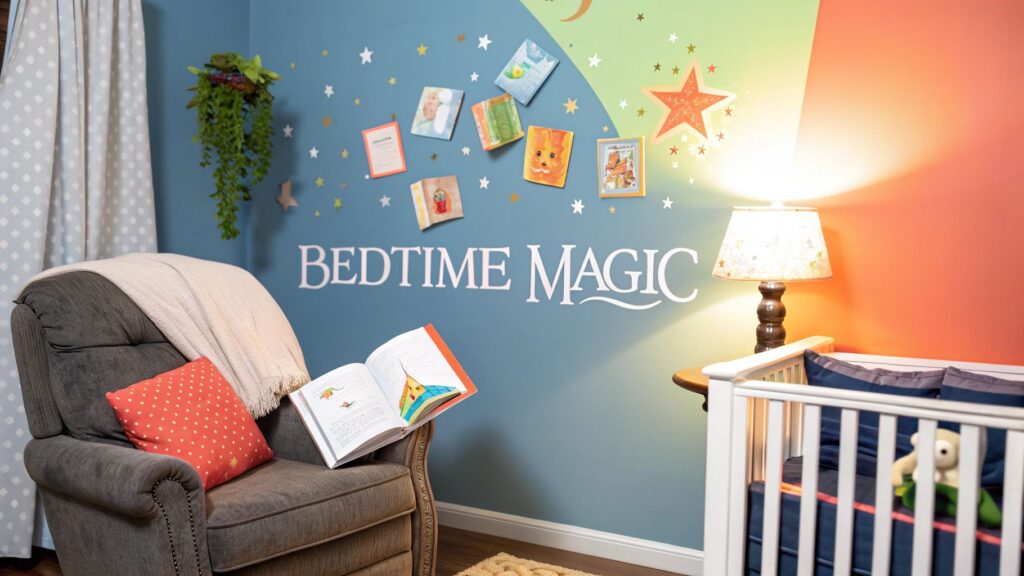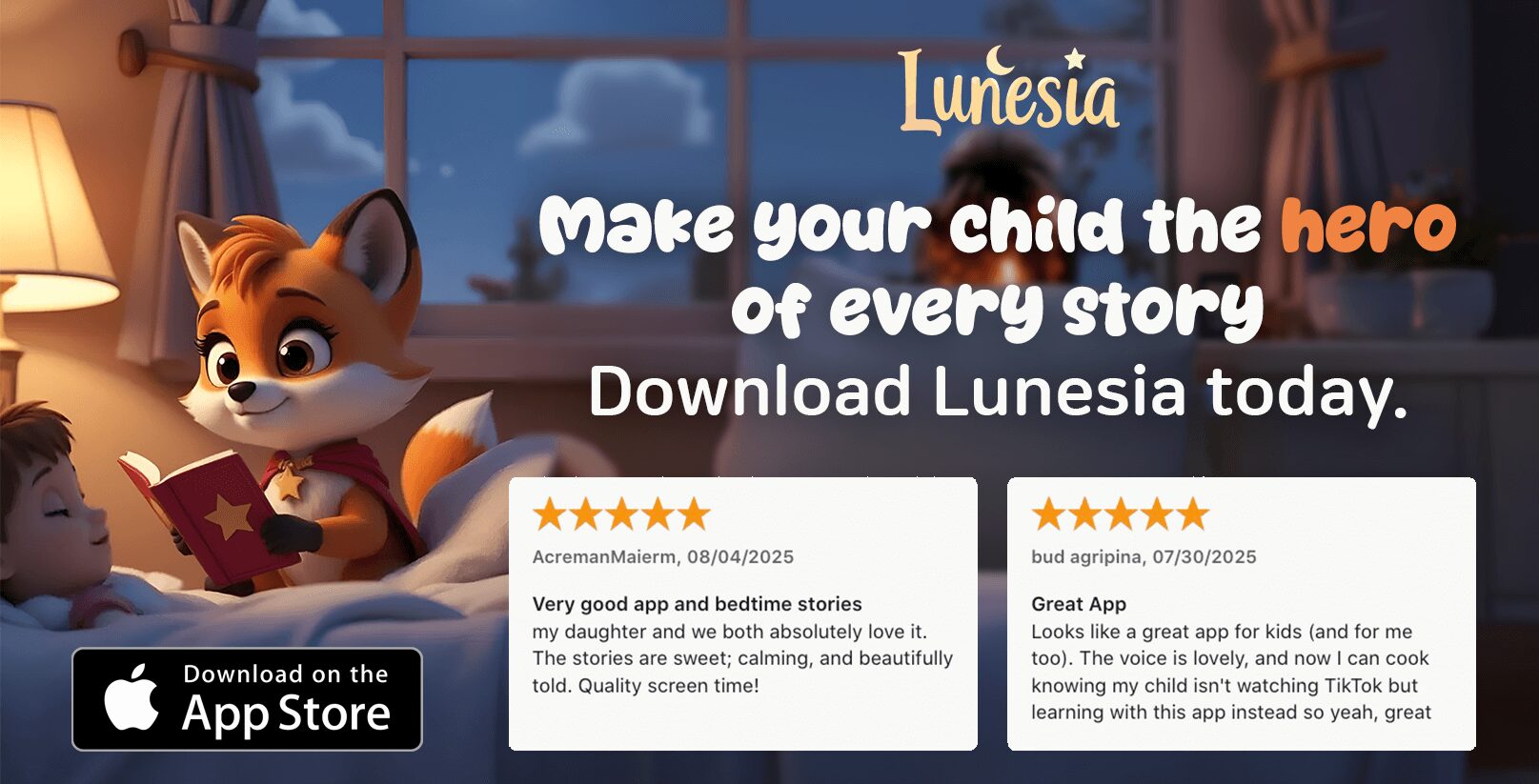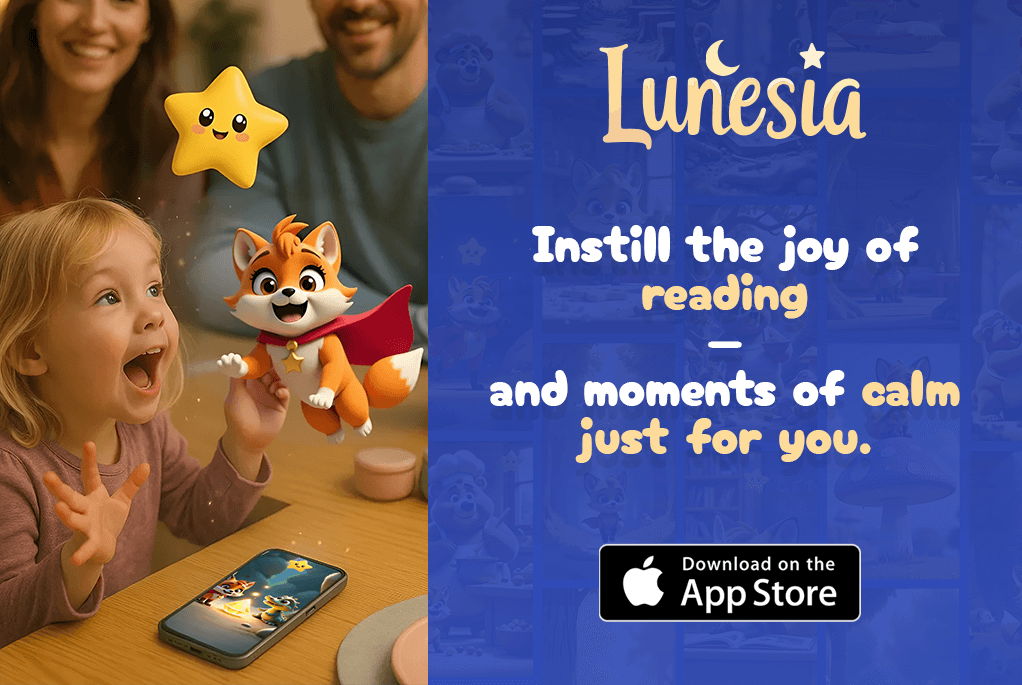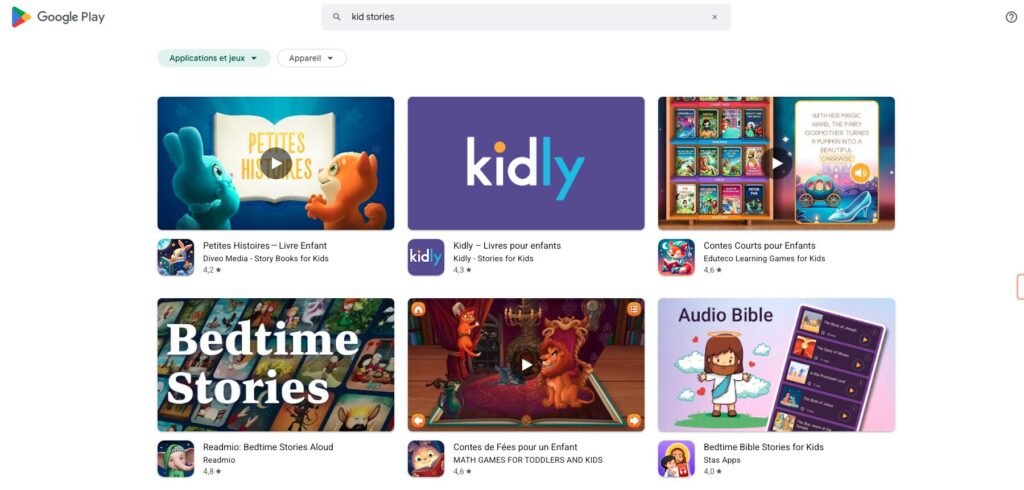Ever feel like bedtime is more of a battle than a blessing? You're not alone. But what if a simple story could transform those chaotic final minutes into a magical moment of connection? Finding the right fairy tales for bedtime isn’t just about reciting familiar lines; it’s about creating a nightly ritual that quiets a busy mind, teaches resilience, and helps your child process their big, beautiful day. It’s your chance to turn a routine into a cherished memory.
To truly reclaim bedtime, think about creating a space that whispers "calm." Want some inspiration? Explore these brilliant tips for cozy bedroom ideas to create a personal sanctuary before you even open a book.
This guide is more than just a list. We're diving into eight timeless tales, unpacking not only their plots but the powerful life lessons they offer—from problem-solving in The Three Little Pigs to self-love in The Ugly Duckling. You'll get practical, concrete tips for making these stories interactive and meaningful for your little one, whether they’re 2 or 7. We’ll even show you how to use these narratives to tackle common childhood fears and anxieties. And what if storytime could be even more powerful? We’ll introduce you to modern tools like the Lunesia app, which turns passive listening into an empowering adventure where your child’s choices shape the outcome. Let’s make bedtime the best part of the day.
1. Goldilocks and the Three Bears
What if a simple story could teach your child about boundaries and the comfort of finding what’s “just right” for them? That’s the real magic of Goldilocks and the Three Bears. This classic tale follows a curious girl who wanders into the empty home of three bears, sampling their porridge, trying their chairs, and testing their beds. Sound familiar? Her quest for the perfect fit makes it one of the most soothing fairy tales for bedtime, echoing a child's own desire for comfort and order.

But this story is so much more than a charming adventure. It’s a powerful tool for teaching consequences in a safe, understandable way. When the bears return home, your child learns a gentle lesson about respecting others' property without feeling scared. It opens up a natural conversation about empathy. You can ask, "How do you think Baby Bear felt when he saw his broken chair?" It’s these small moments that build emotional intelligence.
How to Make This Story Part of Your Routine
- Emphasize "Just Right": Use a soft, rhythmic voice to highlight the "too hot," "too cold," and "just right" moments. This predictable pattern is incredibly calming for a child who is winding down for sleep.
- Encourage Prediction: Pause and ask, "What do you think Goldilocks will do next?" This simple interaction transforms them from a passive listener into an active participant.
- Focus on Feelings, Not Fault: Instead of labeling Goldilocks as "naughty," talk about her curiosity. You could say, "Goldilocks was so curious! What could she have done differently when she found the cottage?" This shifts the focus from shame to problem-solving.
Now, imagine if your child could actually guide Goldilocks. In Lunesia’s interactive version, they don't just listen—they make the choices. Should she enter the house? What should she do when the bears return? This empowers them to explore consequences from a first-person perspective, turning a classic bedtime story into a meaningful lesson in empathy and respect.
2. The Three Little Pigs
Ever wonder if a story about a big bad wolf could actually make your child feel safer at bedtime? It sounds counterintuitive, but that’s the surprising power of The Three Little Pigs. This enduring tale of three brothers whose building choices are put to the test is a masterclass in resilience. The story’s suspense and triumphant ending celebrate planning and hard work, making it one of the most reassuring fairy tales for bedtime because it proves that a strong, safe home is everything.
Worried the wolf is too scary? He’s actually the perfect villain to help your child confront their fears in a controlled way. A study from the University of Sussex found that experiencing fear in a safe context, like reading a book with a parent, can help children build emotional resilience. The story powerfully illustrates that while shortcuts are tempting, taking the time to do something right pays off—a lesson that will serve them long after they’ve outgrown their toddler bed.
How to Make This Story Part of Your Routine
- Make It Interactive: Use distinct, playful voices for each pig and a deep, rumbling (but not terrifying!) voice for the wolf. Encourage your child to join in on the famous line, "I'll huff, and I'll puff…" This turns the story into a fun, collaborative game.
- Build the Suspense (Safely): Pause dramatically before the wolf tries to blow down the brick house. Ask, "Do you think his plan will work this time? Why not?" This moment builds excitement and reinforces the story's central message.
- Focus on Safety and Teamwork: End the story by highlighting how the smart pig kept his brothers safe. "They were all cozy and safe together in the strong brick house." This connects the story directly to the feeling of being secure in their own bed.
What if your child could be the one to outsmart the wolf? In Lunesia’s interactive version, they don’t just hear about the pigs' choices—they help make them. By deciding which materials to use, they actively learn about cause and effect. This transforms a classic tale into a dynamic lesson on resilience, turning bedtime into a powerful exercise in strategic thinking and feeling secure. And while they’re safely absorbed in this ad-free adventure, you get a few precious, guilt-free minutes to yourself.
3. Little Red Riding Hood
Could a classic adventure become your most effective tool for teaching your child about safety without scaring them? Little Red Riding Hood offers exactly that. This timeless tale follows a kind girl on her way to visit her grandmother. Her encounter with a cunning wolf provides a gentle yet powerful introduction to trusting your intuition, making it one of the most valuable fairy tales for bedtime.

Let's be honest, older versions of this story can be terrifying. But modern adaptations transform it into a brilliant lesson about listening to that little inner voice. It's the perfect conversation starter for your family's safety rules—like not talking to strangers or staying on the path—without causing anxiety. The story’s resolution, where Red Riding Hood is saved, provides a comforting reassurance that help is always available.
How to Make This Story Part of Your Routine
- Choose the Right Version: For bedtime, this is non-negotiable. Select a modern retelling with a gentle, happy ending where everyone is safe. The goal is to empower, not frighten.
- Focus on Kindness and Courage: Frame Red Riding Hood as a kind girl who loves her grandmother. When the wolf appears, celebrate her courage and cleverness.
- Discuss Safety Rules Calmly: Use the story as a springboard. Ask, "What could Red Riding Hood do if she meets a stranger?" or "Why is it important to stay on the path?" This makes safety a conversation, not a lecture.
Now, imagine your child could actively guide Red Riding Hood away from danger. Lunesia’s interactive retelling puts your child in control. They can choose whether to talk to the wolf or which path to take. This experience doesn’t just teach safety; it builds critical thinking and self-confidence. Your child gets to practice making safe choices in a fun, supportive environment, turning a classic tale into a powerful lesson in personal safety.
4. The Ugly Duckling
What if a story could convince your child that being different is their greatest superpower? That’s the profound gift of Hans Christian Andersen’s The Ugly Duckling. The story follows a young bird who is teased and rejected simply for looking different. After a lonely journey, he discovers his true identity not as a duck, but as a magnificent swan. This gentle narrative is one of the most reassuring fairy tales for bedtime, showing kids that everyone blossoms in their own time.

This is your secret weapon for talking about big feelings like loneliness, bullying, and kindness. It helps children understand that true worth isn't based on fitting in, but on embracing what makes them unique. The duckling’s eventual transformation is a hopeful, comforting resolution, perfect for easing a child into a peaceful sleep. It’s an essential story for building the empathy and self-esteem that will protect their hearts for years to come.
How to Make This Story Part of Your Routine
- Focus on Feelings: Ask questions like, "How do you think the little bird felt when the others were mean to him?" This helps your child connect with the character's emotions and flex their empathy muscles.
- Emphasize the Transformation: Use a soft, wondering tone as the duckling sees his reflection, and a warm, uplifting voice when he joins the other swans. Let them feel the joy of self-discovery.
- Connect to Their Experiences: Did your 4-year-old have a tantrum because a friend didn't want to play their game? Connect it. "Remember how you felt sad? The little duckling felt sad too. But he found friends who loved him just the way he was."
Lunesia brings this journey of self-discovery to life with an interactive version where your child’s choices matter. Imagine them deciding how the duckling should respond to teasing or which path he should take. This immersive experience doesn’t just tell a story; it helps your child practice resilience and compassion in a safe, supportive space, transforming a classic tale into a powerful lesson in self-love.
5. Sleeping Beauty
What if a story about a long, peaceful nap could actually help your little one embrace their own bedtime? That’s the gentle power of Sleeping Beauty. This enchanting tale follows a princess cursed to fall into a deep sleep, protected by good fairies until she is awakened. The story’s central theme of a long, undisturbed slumber makes it one of the most fitting fairy tales for bedtime.
But it's more than just a romance. This story is a comforting narrative about safety and patience. The idea that an entire kingdom can rest peacefully, watched over by benevolent magic, provides a profound sense of security for a child. It frames sleep not as a scary separation, but as a magical, restorative state where they are safe and protected—a perfect antidote to bedtime anxiety.
How to Make This Story Part of Your Routine
- Focus on the Peaceful Sleep: When describing Princess Aurora's slumber, use a soft, dreamy voice. Linger on descriptions of the quiet castle, turning the story into a guided meditation that helps your child relax.
- Highlight the Good Fairies: Emphasize the role of the good fairies who protect Aurora. You can say, "Just like the fairies watched over the princess, we are here to watch over you while you sleep." This reinforces a feeling of safety and love.
- Connect Sleep to Strength: Frame the long sleep as a way for the princess to rest and grow, so she is ready for her happy ending. This helps children see their own bedtime as a positive part of their day.
To explore this classic tale from a new perspective, discover more about the different versions of Sleeping Beauty and other famous bedtime stories. For an even deeper experience, Lunesia’s interactive adventures allow children to engage with similar themes of courage and kindness, making choices that help characters overcome challenges. This transforms a passive story into an active lesson in empathy and the triumph of good.
6. Jack and the Beanstalk
What if a story about magic beans could plant the seeds of courage and resourcefulness in your child? That’s the grand adventure of Jack and the Beanstalk. This classic tale follows a young boy who trades his family's cow for magic beans. When they sprout into a colossal beanstalk, Jack climbs into the clouds, using his wit to secure treasures and save his family. It’s a thrilling ride!
While the giant might seem intimidating, this story is a powerful vehicle for teaching bravery. Jack doesn’t have super strength; he has cleverness and determination. This makes it one of the most empowering fairy tales for bedtime, showing kids that even someone small can overcome enormous challenges through quick thinking. It beautifully illustrates that sometimes you have to take a risk for the good of your family.
How to Make This Story Part of Your Routine
- Focus on the Magic: Use an awe-filled voice when describing the beanstalk growing. Whisper, "And overnight, the beanstalk grew up, and up, and UP, past the clouds!" This builds excitement and wonder, overshadowing the scarier parts.
- Highlight Jack’s Cleverness: Instead of just narrating, pause to admire Jack’s choices. Ask, "That was a smart idea to hide in the cupboard, wasn't it? What would you have done?" This turns the narrative into a lesson in creative problem-solving.
- End on a Secure Note: Conclude by emphasizing the happy outcome. Talk about how Jack and his mother were safe and no longer had to worry. This reinforces a sense of security, perfect for helping a child drift off feeling safe.
In Lunesia’s interactive version, your child gets to guide Jack through his adventure. They can decide whether to trade the cow or how to outsmart the giant, directly engaging with the story's moral dilemmas. This transforms a simple bedtime tale into a hands-on experience in courage and strategic thinking, empowering them to see themselves as the hero who can solve any problem.
7. The Tortoise and the Hare
Ever wish you could teach your child that winning isn’t about being the fastest, but about never giving up? That is the quiet power of The Tortoise and the Hare. This ancient fable tells the story of a slow-but-steady tortoise who challenges a boastful hare to a race. The hare’s overconfidence leads him to nap, allowing the persistent tortoise to cross the finish line first. Its simple plot and powerful moral make it one of the most encouraging fairy tales for bedtime.
This tale is a brilliant way to introduce perseverance and humility. For a child who just had a meltdown trying to build a LEGO tower, the tortoise becomes a hero. He proves that effort and determination are superpowers in their own right. It opens a meaningful conversation about trying your best, even when a task seems hard, and celebrating the journey, not just the finish line.
How to Make This Story Part of Your Routine
- Vary Your Pacing: Use a fast, energetic voice for the Hare and a slow, calm, deliberate voice for the Tortoise. This vocal contrast makes the story more engaging and helps your child physically feel the difference.
- Connect to Real Life: Talk about a time your child learned a new skill, like riding a bike. "Remember how you kept trying, just like the tortoise? And then you did it!" This connects the fable's moral directly to their own accomplishments.
- Focus on Strengths: Emphasize that both characters have different abilities. Ask, "What is the Hare really good at? And what is the Tortoise's special strength?" This teaches children to value diverse talents in themselves and others.
For more tales that teach powerful life lessons, you can explore other fables for kids and see how different stories build character and resilience. By turning storytime into a lesson on the value of consistent effort, you give your child a tool they can use to face any challenge with confidence.
8. The Velveteen Rabbit
Could a simple stuffed toy teach your child the profound meaning of love and what it means to be real? That is the quiet magic of The Velveteen Rabbit. Margery Williams’ timeless story follows a toy rabbit who yearns to become real through the genuine love of his owner. This touching journey explores devotion, loss, and the magic of being truly seen, making it one of the most heartfelt fairy tales for bedtime.
This tale beautifully navigates complex emotions like attachment and change in a way young children can grasp. When the rabbit becomes worn and shabby from being loved so much, the story teaches that true value isn't found in how we look, but in the love we share. It opens up gentle conversations about growing up, the importance of cherished possessions, and the idea that love transforms us.
How to Make This Story Part of Your Routine
- Focus on the Love: Use a gentle, warm voice when describing the moments between the Boy and the Rabbit. Emphasize how being loved made the rabbit feel, connecting the story to your child's own feelings of being cherished.
- Discuss What "Real" Means: Pause to ask, "What do you think the Skin Horse meant by 'Real'?" This helps your child explore abstract concepts like love and authenticity through their own experiences.
- Emphasize the Happy Ending: The story touches on sadness, so be sure to frame the ending as a beautiful transformation. Celebrate the moment the Nursery Magic Fairy turns the rabbit into a real, living creature, reinforcing a message of hope.
With Lunesia, your child can explore similar themes of empathy and transformation in stories that respond to their choices. Interactive adventures like The Velveteen Rabbit on lunesia.app empower children to see how their actions and feelings can create magical outcomes, turning a bedtime story into a powerful lesson in emotional connection and the true meaning of love.
Bedtime Fairy Tales Comparison Chart
| Story | Implementation Complexity 🔄 | Resource Requirements ⚡ | Expected Outcomes 📊 | Ideal Use Cases 💡 | Key Advantages ⭐ |
|---|---|---|---|---|---|
| Goldilocks and the Three Bears | Low – simple repetitive structure | Low – easy to memorize | Teaches boundaries, size comparison, balance | Bedtime stories for ages 2-6 | Calming rhythm; clear moral; relatable protagonist |
| The Three Little Pigs | Moderate – voices and tension | Moderate – need for varied voices | Hard work, planning, perseverance lessons | Interactive reading, preschool curriculum | Engaging, interactive; strong good vs evil theme |
| Little Red Riding Hood | Moderate – multiple versions | Moderate – voice variation | Stranger danger awareness; safety lessons | Safety-focused storytelling ages 4-8 | Strong female lead; rich language; adaptable scariness |
| The Ugly Duckling | Moderate – emotional depth | Moderate – longer reading time | Self-acceptance, empathy, personal growth | Stories for slightly older children 4-10 | Uplifting message; builds compassion; beautiful imagery |
| Sleeping Beauty | Higher – longer, complex narrative | Moderate to high – length varies | Themes of restful sleep, good vs evil, love | Bedtime for 4-9 year-olds needing calming | Magical, dreamy; promotes sleep; comforting fairies |
| Jack and the Beanstalk | Moderate – adventure and dialogue | Moderate – some complexity | Courage, resourcefulness, family loyalty | Adventure-themed bedtime, 4-8 years | Exciting plot; teaches bravery and problem-solving |
| The Tortoise and the Hare | Low – very simple and short | Low – very quick read | Perseverance, steady effort wins | Very short routines, 3-7 years | Quick moral; encourages effort; easy to remember |
| The Velveteen Rabbit | Higher – emotional, poetic language | Moderate to high – longer story | Love, loss, transformation, emotional growth | Calming bedtime for 4-10 years | Deep emotional impact; teaches about love & change |
Your Story, Your Night: Crafting a Bedtime Ritual That Lasts
As we tuck away these tales, one truth becomes clear: the stories we tell at bedtime do more than just invite sleep. They are your secret toolkit for connection, growth, and building the emotional resilience your child needs to thrive. The right collection of fairy tales for bedtime isn't just a list; it’s a roadmap for navigating the big feelings and complex questions of childhood, one cozy night at a time.
From "The Three Little Pigs," we learned how preparation builds security, while "The Ugly Duckling" offered a timeless lesson in self-love. Each story is a springboard for conversations about courage, kindness, and consequence, transforming a simple routine into an opportunity for profound bonding. These aren't just passive listening sessions. They are active moments where you can see your child’s imagination ignite.
Your Next Steps to a Magical Bedtime
So, where do you go from here? The magic is in how you bring these tales to life. Here are some practical steps you can take tonight:
- Co-Create Your Story Library: Don't just pick a story for your child. Involve them. Ask, "Tonight, do you feel like visiting the bears' cottage or racing with the tortoise?" Giving them a choice fosters independence and gets them more excited about the ritual.
- Embrace the Interactive Twist: Move beyond passive reading. When the wolf knocks, let your child make the huffing and puffing sounds. When Jack climbs, ask what they think he sees. This active participation turns listening into a multisensory experience.
- Connect Stories to Real-Life Emotions: Did your child have a tough day at preschool? The Velveteen Rabbit’s journey can be a gentle way to talk about feeling loved. A 2019 study confirmed that stories are one of the most effective ways children learn to process their emotions, building essential empathy skills.
Key Takeaway: The goal is a predictable, yet flexible, bedtime ritual. Consistency signals to your child’s brain that it's time to wind down, while the variety of stories keeps the experience fresh and engaging.
Ultimately, a strong bedtime routine creates a sanctuary in a busy world. This nightly ritual is more than just a means to an end; it's an investment in your child's emotional well-being and your own peace of mind. For those looking to optimize their evening further, exploring simple habits that can improve sleep quality can be a game-changer for the whole family. By weaving these timeless fairy tales for bedtime into your family's life, you are not just reading stories; you are writing your own.
Ready to give your child a story where they're the hero? Lunesia transforms classic fairy tales into interactive adventures where your child's decisions shape the outcome, building critical thinking and emotional intelligence along the way. Discover Lunesia and turn storytime into an empowering journey, all within a safe, ad-free world designed just for them.




